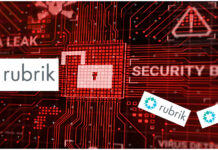Broadcom announced its third-generation Tomahawk 6 Davisson (TH6-Davisson) product, the industry’s first 102.4 Tbps co-packaged optics (CPO) Ethernet switch – double the bandwidth of any CPO switch available today. Broadcom claims Davisson is changing the game for AI infrastructure. By reducing link flaps and power consumption, it not only cuts costs, but enables faster, more reliable AI model training. This allows Broadcom customers to achieve higher MFU, fewer job failures, and greater cluster uptime, unlocking unprecedented value for both scale-up and scale-out AI deployments.
…
Broadcom announced Thor Ultra for AI Scale-Out networking, the industry’s first 800G AI Ethernet network interface card (NIC) engineered to deliver advanced RDMA for large-scale AI datacenters with over 100,000 XPUs. Compliant with the new Ultra Ethernet Consortium (UEC) capabilities, Thor Ultra delivers the performance, scalability and openness required for tomorrow’s scale-out AI clusters – without lock-in and with true interoperability.
RDMA is key to accelerating job completion in AI datacenters. However, traditional RDMA cannot keep pace with the demands of future AI workloads. It lacks Multipathing Support, cannot handle Out-of-Order Packet Delivery, and relies on slow retransmission methods like Go-Back-N, and uses Congestion Control mechanisms that are difficult to tune.
Thor Ultra introduces a suite of advanced RDMA features designed to meet the demands of next-generation AI workloads:
- Packet-level multipathing for efficient load balancing.
- Out-of-order data placement to XPU memory, maximizing PCIe link utilization.
- Reliable packet delivery with hardware-based selective acknowledgment (SACK) and retransmissions.
- Programmable congestion control to seamlessly adapt to future congestion management algorithms.
…
Ceramic-coated glass tablet archival storage startup Cerabyte showed early access media samples containing copies of the U.S. Constitution at the 2025 Open Compute Project (OCP) Global Summit, October 13-16 in San Jose, California. Watch this video to learn about Cerabyte’s progress in 2025.
…
Reuters reports that data streaming software supplier Confluent is looking for a buyer: “The software provider is working with an investment bank on the sale process, which is in its early stages and was instigated after both private equity firms and other technology companies expressed their interest to the company in buying it, the sources said… Some of the sources had told Reuters while Confluent’s technology is highly sought-after, it became vulnerable to takeover approaches when its stock price dived in July, when it reported losing business from a large customer.”
…
Data protector CrashPlan announced a strategic partnership with cloud storage supplier Wasabi Technologies to store its backups. This partnership eliminates the costly egress and API fees charged by hyperscalers by offering a flat-rate, predictable pricing model, enabling CrashPlan customers to store more data for longer at a fraction of the cost. This partnership covers Microsoft 365, Google Workspace, endpoint devices, and file servers.
…
DeepTempo announced an integration with Cribl, bringing its deep-learning behavioral detection engine directly into Cribl’s telemetry pipeline. It says this is the first time enterprises can run purpose-built deep learning models within their data orchestration workflow, detecting polymorphic and AI-driven threats like agentic attacks and zero-click exploits before data even reaches the SIEM. It says that, as legacy rule-based tools continue to miss behavior-driven threats, this partnership gives SOC teams a new intelligent layer of preprocessing, powered by DeepTempo’s LogLM foundation model that “understands the language of logs.”
…
Generative AI inference pioneer d-Matrix, in collaboration with Arista, Broadcom and Supermicro, announced SquadRack, the industry’s first blueprint for disaggregated, standards-based, rack-scale systems for ultra-low latency batched inference. Showcased at the Open Compute Project Global Summit, SquadRack provides a reference architecture to build turnkey solutions enabling blazing fast agentic AI, reasoning and video generation. It delivers up to 3x better cost-performance, 3x higher energy efficiency, and up to 10x faster token generation speeds compared to traditional accelerators.
SquadRack configured with eight nodes in a single rack enables customers to run Gen AI models up to 100 billion parameters. For larger models or large-scale deployments, it uses industry standards-based Ethernet to scale out to hundreds of nodes across multiple racks.
Components include:
- d-Matrix Corsair Inference Accelerators with innovative compute-memory integration delivering ultra-low latency, high-throughput inference.
- d-Matrix JetStream IO Accelerators enabling ultra-low latency device-initiated, accelerator-to-accelerator communication using standard Ethernet.
- Supermicro X14 AI Server Platform integrated with Corsair accelerators and JetStream NICs.
- Broadcom Atlas PCIe switches for scaling up within a single node.
- Arista Leaf Ethernet Switches connected to JetStream NICs enabling high performance, scalable, standards-based multi-node communication.
- d-Matrix Aviator software stack that makes it easy for customers to deploy Corsair and JetStream at scale and speed up time to inference.
SquadRack configurations will be available for purchase through Supermicro in Q1 2026. Learn more here.
…
Industrial AI supplier Cognite announced a partnership with Databricks, and plans for a bidirectional, zero-copy data sharing integration between the Cognite Industrial AI and Data Platform, which includes Cognite Atlas AI and Cognite Data Fusion, and the Databricks Data Intelligence Platform, including Databricks’ flagship AI product, Agent Bricks. This collaboration leverages the open ecosystem approach of both platforms to provide a unified, domain-specific intelligent data foundation for Industrial AI, driving operational efficiency and measurable business value across the enterprise.
…
Channel-led DataCore launched its Freedom360 Partner Program. The software-defined DataCore offering includes SANsymphony for block storage, Nexus for file (via the ArcaStream acquisition in February 2025), Swarm for object, Puls8 for containers, and StarWind for hyperconverged infrastructure (acquired in May 2025). Pixitmedia solutions (acquired in Feb 2025) further extend opportunities in media and entertainment, supporting end-to-end workflows in broadcast, live events, post-production, and creative pipelines. Freedom360 has a progressive certification framework – Base, Specialist, and Excellence – that recognizes partner commitment and rewards contribution. This system gives every partner, whether newly onboarded or long established, a clear path to higher rewards, greater visibility, and stronger collaboration with DataCore. The framework is designed to accelerate cross-sell opportunities across the portfolio. DataCore is modernizing partner training and certification
…
DDN Infinia is available in Oracle Cloud Marketplace and can be deployed on Oracle Cloud Infrastructure (OCI). Oracle Cloud Marketplace is a centralized repository of enterprise applications offered by Oracle and Oracle partners. DDN Infinia delivers cloud-native, GPU-optimized, software-defined object storage designed to mitigate the complexity, performance bottlenecks, and costs that stall modern AI pipelines. Infinia is optimized for OCI bare metal instances, providing improved performance for AI, analytics, and data-intensive workloads while supporting OCI’s native governance, spend management, and compliance frameworks.
…
Automated data mover Fivetran signed a definitive agreement to merge in an all-stock deal with dbt Labs. Fivetran CEO George Fraser will serve as CEO of the unified company, and dbt Labs CEO Tristan Handy will serve as co-founder and President. Following close of the transaction, the combined company will be approaching nearly $600 million in ARR. As part of this transaction, the company is committed to keeping dbt Core open under its current license and maintaining it with and for the community, ensuring its development remains vibrant.
The unification of Fivetran and dbt sets the standard for open data infrastructure, a new approach that reduces engineering complexity by automating data management end to end. It works across any compute engine, catalog, BI tool, or AI model, is built on open standards like SQL and Iceberg, and remains flexible so organizations avoid lock-in and can scale with future workloads.
Finalisation of the merger remains subject to customary closing conditions, including regulatory approvals.
…
Data security supplier Forcepoint announced the expansion of its Self-Aware Data Security platform to protect enterprise databases and structured data sources. With this launch, Forcepoint is the first to extend AI Mesh Data Classification technology across both structured and unstructured data throughout the hybrid enterprise, delivering unified Data Security Posture Management (DSPM) and adaptive data loss prevention in a single platform.
Most DSPM tools stop at cloud visibility without remediation, widening the gap between visibility and control. Forcepoint extends its AI Mesh-powered discovery and classification into enterprise databases and business applications, while unifying visibility with enforcement across SaaS apps, endpoints, networks and AI workflows. This closes that gap by giving enterprises and governments a single, AI-native platform to secure both structured and unstructured data consistently. Read a blog to learn more.
…
According to an HPE blog: “The HPE Alletra Storage MP X10000, supporting unstructured, data-intensive workloads, will soon introduce native support for the Model Context Protocol (MCP) – enabling seamless integration between storage, compute, and AI frameworks. Together, they create a modular, software-defined platform that grows with the business.”
…
Anti-ransomware backup startup HyperBunker has closed an €800,000 seed round from Fil Rouge Capital and Sunfish Venture Capital.
…
GPU-based NVMe RAID supplier Graid Technology has entered a strategic license agreement with Intel to take the lead in developing, marketing, selling, and supporting Intel VROC (Virtual RAID on CPU) worldwide. Together, CPU- and GPU-based RAID architectures will deliver unparalleled speed, scalability, and resilience for AI, HPC, and data-intensive workloads.
As we understand it, Intel VROC is a blend of hardware and software RAID storage, designed to maximize the performance of NVMe SSDs in high-end computing environments like servers and workstations. It enables RAID configurations (such as RAID 0, 1, 5, 10, and matrix RAID) directly through the CPU, eliminating the need for separate hardware RAID controllers or host bus adapter (HBA) cards, which reduces complexity, cost, power consumption, and frees up PCIe slots.
At close, which is expected by the end of the year, Graid Technology will assume responsibility for all Intel VROC customer support and future development. Both Intel and Graid Technology say they are committed to ensuring a seamless transition with regular updates and transparent communication throughout the process.
Graid told us: “[Our] SupremeRAID is a software-defined RAID solution that runs on the GPU, not a hardware card. Under the new agreement, we’ll lead global sales, development and support for Intel VROC, which remains a CPU-based RAID product. Together they offer complementary, software-defined RAID architectures for different performance needs.’
…
JEDEC Solid State Technology Association announced it is nearing completion of the next version of its Universal Flash Storage (UFS) standard: UFS 5.0. Designed for mobile applications and computing systems that demand high performance with low power consumption, UFS 5.0 should deliver:
- Increased sequential performance up to 10.8 GB/s to meet AI demands.
- Integrated link equalization for more reliable signal integrity.
- Distinct power supply rail to provide noise isolation between PHY and memory subsystem, easing system integration.
- Inline Hashing for greater security.
…
Lightbits Labs, which supplies software-defined, disaggregated, NVMe over TCP storage, and CYBERTEC, the largest PostgreSQL consultancy and services delivery company in Europe, announced a strategic technical alliance that offers optimized next-gen infrastructure for high-performance PostgreSQL workload needs. The collaboration combines CYBERTEC’s PostgreSQL expertise with Lightbits’ high-performance block storage to help organizations overcome the storage bottlenecks that limit the growth and performance of PostgreSQL databases at scale.
…

Mainframe software modernizer Mechanical Orchard has hired Ingo Wiegand as VP of Product, reporting directly to CEO Rob Mee. His most recent position was GM & VP of Product Management at Samsara, where he led the video-based safety product through a phase of hyper-growth to several hundreds of millions in ARR over the course of five years. Wiegand will scale the Imogen product, including managing the roadmap, driving smooth collaboration between teams, and ensuring the successful translation from vision to delivery.
Imogen “rewrites mainframe applications safely and quickly by focusing on the behavior of the system as represented by data flows, rather than on just translating code. This approach, encapsulated in the platform, signals the end of opaque, risky and uncertain mainframe transformation projects, resets the technical debt meter and restores control to IT teams through rewriting systems into clean, modern code. Customers span the global banking, retail, healthcare, manufacturing, and logistics sectors.”
…
Wedbush analyst Matt Bryson told subscribers that Samsung announced its Q3 operating profit is expected to grow around 32 percent year-over-year to ₩12.1 trillion ($8.5 billion), marking its highest levels since Q2 2022 and far exceeding consensus of ₩10 trillion. Although detailed figures weren’t disclosed, the Chosun Daily estimates Samsung’s semiconductor division (DS) drove the majority of the upside earning around ₩5 trillion, more than ten times its Q2 profit of ₩400 billion. A number of reports attributed the earnings beat to stronger-than-expected prices of commodity DRAM and NAND, stemming from demand for AI datacenter servers, and overall tighter chip inventory levels.
…
A TrendFocus newsletter contributed by Mike Montemorra mentioned that Solidigm “just announced a neat ‘central lab’ where it can develop high-performance AI architectures for next-gen edge and AI compute systems. The lab will be at the company’s Rancho Cordova headquarters. I am assuming this will include a strategy to incorporate HBF (High Bandwidth Flash) into AI processors using HBM DRAM. It’s a once-in-a-generation opportunity that could pay off big for Solidigm and, by extension, SK hynix.”
…
Pfeiffer University, a private nonprofit liberal arts institution in North Carolina, is using VergeIO to replace VMware, reducing Pfeiffer’s infrastructure costs by approximately 85 percent. “VMware wasn’t calling us back,” said CIO Ryan Conte. “VergeOS was the only product I looked at that didn’t need hardware. Others told me to buy new, but I had good servers with life left in them. VergeOS let me use them.” VMware’s move to per-core subscriptions increased Pfeiffer’s projected costs to $35,000-$45,000 annually, compounded by the elimination of discounts offered to higher education institutions. In addition, MSPs pushed for hardware refreshes or cloud migrations that would have cost Pfeiffer $100,000 to $200,000 – a significant capital expense for most private nonprofit institutions.
VergeIO stood out because it:
- Supported reuse of HP Gen9/10/11 and Dell servers, allowing the university to repurpose existing equipment.
- Combined virtualization, storage, networking, and data protection into a single platform.
- Enabled in-house migration of 30–40 VMs without professional services.
- Delivered built-in disaster recovery, replication, and ransomware protection, eliminating the need for a separate $20,000–$30,000 backup project.
- Provided rapid support response times.
Learn more in the case study here.
…
Western Digital announced the opening of its expanded System Integration and Test (SIT) Lab, a state-of-the-art 25,600 sq ft facility in Rochester, Minn. and called it a strategic investment to provide research, development and global operations and enable real-world testing and validation with a mini datacenter environment. The SIT Lab serves as a massive, dedicated collaboration hub where the company’s engineers work alongside key customers throughout every stage of the product lifecycle, including development, qualification, production ramp and end-of-life. WD’s global SIT lab network has multiple sites close to its customers in the United States and across Asia. A blog says more.








